Unilateral Ureteral Obstruction as a Model to Investigate Fibrosis-Attenuating Treatments
Abstract
1. Introduction
1.2. Experimental Procedure of UUO
1.3. Events in the Unilateral Ureteral Obstruction (UUO) Model
1.3.1. Mechanical Stretching and RAS Activation
1.3.2. Tubular Epithelial Cell Apoptosis
1.3.3. Oxidative Stress
1.3.4. Inflammation
1.3.5. Leukocyte Migration
1.3.6. Fibroblast Activation
1.3.7. Fibrosis
1.4. Justification
1.5. Histology and Immunohistochemistry
1.6. RT-qPCR
1.7. Western Blotting
1.8. Fibrosis-Attenuating Treatments for the UUO-OKs
1.8.1. Vitamins
1.8.2. Antioxidants
1.8.3. Pharmaceuticals
1.8.4. Plant-Derived Compounds
1.8.5. Purified or Synthesized Chemical Compounds
1.8.6. Recombinant Polypeptides
1.8.7. Small Interfering RNAs
1.8.8. Stem Cells
2. Discussion
3. Conclusions
Funding
Acknowledgments
Conflicts of Interest
References
- Xu, W.; Shao, X.; Tian, L.; Gu, L.; Zhang, M.; Wang, Q.; Wu, B.; Wang, L.; Yao, J.; Xu, X.; et al. Astragaloside IV Ameliorates Renal Fibrosis via the Inhibition of Mitogen-Activated Protein Kinases and Antiapoptosis In Vivo and In Vitro. J. Pharmacol. Exp. Ther. 2014, 350, 552–562. [Google Scholar] [CrossRef] [PubMed]
- Chevalier, R.L.; Forbes, M.S.; Thornhill, B.A. Ureteral obstruction as a model of renal interstitial fibrosis and obstructive nephropathy. Kidney Int. 2009, 75, 1145–1152. [Google Scholar] [CrossRef]
- Chevalier, R.L.; Thornhill, B.A.; Forbes, M.S.; Kiley, S.C. Mechanisms of renal injury and progression of renal disease in congenital obstructive nephropathy. Pediatr. Nephrol. 2010, 25, 687–697. [Google Scholar] [CrossRef]
- Wongmekiat, O.; Leelarungrayub, D.; Thamprasert, K. Alpha-Lipoic Acid Attenuates Renal Injury in Rats with Obstructive Nephropathy. Biomed Res. Int. 2013, 2013, 1–7. [Google Scholar] [CrossRef] [PubMed]
- Ucero, A.C.; Benito-Martin, A.; Izquierdo, M.C.; Sanchez-Niño, M.D.; Sanz, A.B.; Ramos, A.M.; Berzal, S.; Ruiz-Ortega, M.; Egido, J.; Ortiz, A. Unilateral ureteral obstruction: beyond obstruction. Int. Urol. Nephrol. 2014, 46, 765–776. [Google Scholar] [CrossRef] [PubMed]
- Zhang, J.; Xing, Z.-Y.; Zha, T.; Tian, X.-J.; Du, Y.-N.; Chen, J.; Xing, W. Longitudinal assessment of rabbit renal fibrosis induced by unilateral ureteral obstruction using two-dimensional susceptibility weighted imaging. J. Magn. Reson. Imaging 2018, 47, 1572–1577. [Google Scholar] [CrossRef]
- Lee, J.; Hwang, I.; Lee, J.H.; Lee, H.W.; Jeong, L.-S.; Ha, H. The Selective A 3 AR Antagonist LJ-1888 Ameliorates UUO-Induced Tubulointerstitial Fibrosis. Am. J. Pathol. 2013, 183, 1488–1497. [Google Scholar] [CrossRef]
- Kim, S.; Kim, S.J.; Yoon, H.E.; Chung, S.; Choi, B.S.; Park, C.W.; Shin, S.J. Fimasartan, a Novel Angiotensin-Receptor Blocker, Protects against Renal Inflammation and Fibrosis in Mice with Unilateral Ureteral Obstruction: the Possible Role of Nrf2. Int. J. Med. Sci. 2015, 12, 891–904. [Google Scholar] [CrossRef]
- Lee, W.-C.; Jao, H.-Y.; Hsu, J.-D.; Lee, Y.-R.; Wu, M.-J.; Kao, Y.-L.; Lee, H.-J. Apple polyphenols reduce inflammation response of the kidneys in unilateral ureteral obstruction rats. J. Funct. Foods 2014, 11, 1–11. [Google Scholar] [CrossRef]
- Kido, T.; Tsunoda, M.; Sugaya, C.; Hano, H.; Yanagisawa, H. Fluoride potentiates tubulointerstitial nephropathy caused by unilateral ureteral obstruction. Toxicology 2017, 392, 106–118. [Google Scholar] [CrossRef]
- Chaabane, W.; Praddaude, F.; Buleon, M.; Jaafar, A.; Vallet, M.; Rischmann, P.; Galarreta, C.I.; Chevalier, R.L.; Tack, I. Renal functional decline and glomerulotubular injury are arrested but not restored by release of unilateral ureteral obstruction (UUO). Am. J. Physiol. Physiol. 2013, 304, F432–F439. [Google Scholar] [CrossRef] [PubMed]
- Yanagisawa, H.; Nodera, M.; Wada, O. Zinc deficiency aggravates tubulointerstitial nephropathy caused by ureteral obstruction. Biol. Trace Elem. Res. 1998, 65, 1–6. [Google Scholar] [CrossRef] [PubMed]
- Hosseinian, S.; Rad, A.K.; Bideskan, A.E.; Soukhtanloo, M.; Sadeghnia, H.; Shafei, M.N.; Motejadded, F.; Mohebbati, R.; Shahraki, S.; Beheshti, F. Thymoquinone ameliorates renal damage in unilateral ureteral obstruction in rats. Pharmacol. Reports 2017, 69, 648–657. [Google Scholar] [CrossRef]
- Sun, D.; Bu, L.; Liu, C.; Yin, Z.; Zhou, X.; Li, X.; Xiao, A. Therapeutic Effects of Human Amniotic Fluid-Derived Stem Cells on Renal Interstitial Fibrosis in a Murine Model of Unilateral Ureteral Obstruction. PLoS ONE 2013, 8, e65042. [Google Scholar] [CrossRef]
- Wang, H.; Qian, J.; Zhao, X.; Xing, C.; Sun, B. β-Aminoisobutyric acid ameliorates the renal fibrosis in mouse obstructed kidneys via inhibition of renal fibroblast activation and fibrosis. J. Pharmacol. Sci. 2017, 133, 203–213. [Google Scholar] [CrossRef] [PubMed]
- Xianyuan, L.; Wei, Z.; Yaqian, D.; Dan, Z.; Xueli, T.; Zhanglu, D.; Guanyi, L.; Lan, T.; Menghua, L. Anti-renal fibrosis effect of asperulosidic acid via TGF-β1/smad2/smad3 and NF-κB signaling pathways in a rat model of unilateral ureteral obstruction. Phytomedicine 2019, 53, 274–285. [Google Scholar] [CrossRef] [PubMed]
- Chen, J.; Li, D. Telbivudine attenuates UUO-induced renal fibrosis via TGF-β/Smad and NF-κB signaling. Int. Immunopharmacol. 2018, 55, 1–8. [Google Scholar] [CrossRef]
- Kuwabara, N.; Tamada, S.; Iwai, T.; Teramoto, K.; Kaneda, N.; Yukimura, T.; Nakatani, T.; Miura, K. Attenuation of renal fibrosis by curcumin in rat obstructive nephropathy. Urology 2006, 67, 440–446. [Google Scholar] [CrossRef] [PubMed]
- Sakuraya, K.; Endo, A.; Someya, T.; Hirano, D.; Murano, Y.; Fujinaga, S.; Ohtomo, Y.; Shimizu, T. The Synergistic Effect of Mizoribine and a Direct Renin Inhibitor, Aliskiren, on Unilateral Ureteral Obstruction Induced Renal Fibrosis in Rats. J. Urol. 2014, 191, 1139–1146. [Google Scholar] [CrossRef]
- Abbas, N.A.T.; El. Salem, A.; Awad, M.M. Empagliflozin, SGLT2 inhibitor, attenuates renal fibrosis in rats exposed to unilateral ureteric obstruction: potential role of klotho expression. Naunyn. Schmiedebergs. Arch. Pharmacol. 2018, 391, 1347–1360. [Google Scholar] [CrossRef]
- Hammad, F.T.; Lubbad, L. Does Curcumin Protect against Renal Dysfunction following Reversible Unilateral Ureteric Obstruction in the Rat? Eur. Surg. Res. 2011, 46, 188–193. [Google Scholar] [CrossRef] [PubMed]
- Hashem, R.M.; Mohamed, R.H.; Abo-El-matty, D.M. Effect of curcumin on TNFR2 and TRAF2 in unilateral ureteral obstruction in rats. Nutrition 2016, 32, 478–485. [Google Scholar] [CrossRef]
- Honma, S.; Shinohara, M.; Takahashi, N.; Nakamura, K.; Hamano, S.; Mitazaki, S.; Abe, S.; Yoshida, M. Effect of cyclooxygenase (COX)-2 inhibition on mouse renal interstitial fibrosis. Eur. J. Pharmacol. 2014, 740, 578–583. [Google Scholar] [CrossRef] [PubMed]
- Honma, S.; Nakamura, K.; Shinohara, M.; Mitazaki, S.; Abe, S.; Yoshida, M. Effect of amlodipine on mouse renal interstitial fibrosis. Eur. J. Pharmacol. 2016, 780, 136–141. [Google Scholar] [CrossRef] [PubMed]
- Wang, M.; Chen, D.-Q.; Chen, L.; Cao, G.; Zhao, H.; Liu, D.; Vaziri, N.D.; Guo, Y.; Zhao, Y.-Y. Novel inhibitors of the cellular renin-angiotensin system components, poricoic acids, target Smad3 phosphorylation and Wnt/β-catenin pathway against renal fibrosis. Br. J. Pharmacol. 2018, 175, 2689–2708. [Google Scholar] [CrossRef]
- Baba, I.; Egi, Y.; Utsumi, H.; Kakimoto, T.; Suzuki, K. Inhibitory effects of fasudil on renal interstitial fibrosis induced by unilateral ureteral obstruction. Mol. Med. Rep. 2015, 12, 8010–8020. [Google Scholar] [CrossRef] [PubMed]
- Soji, K.; Doi, S.; Nakashima, A.; Sasaki, K.; Doi, T.; Masaki, T. Deubiquitinase inhibitor PR-619 reduces Smad4 expression and suppresses renal fibrosis in mice with unilateral ureteral obstruction. PLoS ONE 2018, 13, e0202409. [Google Scholar] [CrossRef]
- Wang, W.; Luo, R.; Lin, Y.; Wang, F.; Zheng, P.; Levi, M.; Yang, T.; Li, C. Aliskiren restores renal AQP2 expression during unilateral ureteral obstruction by inhibiting the inflammasome. Am. J. Physiol. Physiol. 2015, 308, F910–F922. [Google Scholar] [CrossRef]
- Nguyen-Thanh, T.; Kim, D.; Lee, S.; Kim, W.; Park, S.; Kang, K. Inhibition of histone deacetylase 1 ameliorates renal tubulointerstitial fibrosis via modulation of inflammation and extracellular matrix gene transcription in mice. Int. J. Mol. Med. 2017, 41, 95–106. [Google Scholar] [CrossRef] [PubMed]
- Wang, Y.; Wang, B.; Du, F.; Su, X.; Sun, G.; Zhou, G.; Bian, X.; Liu, N. Epigallocatechin-3-Gallate Attenuates Oxidative Stress and Inflammation in Obstructive Nephropathy via NF-κB and Nrf2/HO-1 Signalling Pathway Regulation. Basic Clin. Pharmacol. Toxicol. 2015, 117, 164–172. [Google Scholar] [CrossRef]
- Liu, M.; Liu, T.; Shang, P.; Zhang, Y.; Liu, L.; Liu, T.; Sun, S. Acetyl-11-keto-β-boswellic acid ameliorates renal interstitial fibrosis via Klotho/TGF-β/Smad signalling pathway. J. Cell. Mol. Med. 2018, 22, 4997–5007. [Google Scholar] [CrossRef] [PubMed]
- Cavaglieri, R.C.; Day, R.T.; Feliers, D.; Abboud, H.E. Metformin prevents renal interstitial fibrosis in mice with unilateral ureteral obstruction. Mol. Cell. Endocrinol. 2015, 412, 116–122. [Google Scholar] [CrossRef] [PubMed]
- Anorga, S.; Overstreet, J.M.; Falke, L.L.; Tang, J.; Goldschmeding, R.G.; Higgins, P.J.; Samarakoon, R. Deregulation of Hippo–TAZ pathway during renal injury confers a fibrotic maladaptive phenotype. FASEB J. 2018, 32, 2644–2657. [Google Scholar] [CrossRef] [PubMed]
- Xia, Z.; Abe, K.; Furusu, A.; Miyazaki, M.; Obata, Y.; Tabata, Y.; Koji, T.; Kohno, S. Suppression of Renal Tubulointerstitial Fibrosis by Small Interfering RNA Targeting Heat Shock Protein 47. Am. J. Nephrol. 2008, 28, 34–46. [Google Scholar] [CrossRef] [PubMed]
- Tasanarong, A.; Kongkham, S.; Khositseth, S. Dual Inhibiting Senescence and Epithelial-to-Mesenchymal Transition by Erythropoietin Preserve Tubular Epithelial Cell Regeneration and Ameliorate Renal Fibrosis in Unilateral Ureteral Obstruction. Biomed Res. Int. 2013, 2013, 1–12. [Google Scholar] [CrossRef][Green Version]
- Bolati, D.; Shimizu, H.; Yisireyili, M.; Nishijima, F.; Niwa, T. Indoxyl sulfate, a uremic toxin, downregulates renal expression of Nrf2 through activation of NF-κB. BMC Nephrol. 2013, 14, 56. [Google Scholar] [CrossRef]
- Sedeek, M.; Nasrallah, R.; Touyz, R.M.; Hebert, R.L. NADPH Oxidases, Reactive Oxygen Species, and the Kidney: Friend and Foe. J. Am. Soc. Nephrol. 2013, 24, 1512–1518. [Google Scholar] [CrossRef]
- Li, Y.-K.; Ma, D.-X.; Wang, Z.-M.; Hu, X.-F.; Li, S.-L.; Tian, H.-Z.; Wang, M.-J.; Shu, Y.-W.; Yang, J. The glucagon-like peptide-1 (GLP-1) analog liraglutide attenuates renal fibrosis. Pharmacol. Res. 2018, 131, 102–111. [Google Scholar] [CrossRef]
- Guo, J.; Wu, W.; Sheng, M.; Yang, S.; Tan, J. Amygdalin inhibits renal fibrosis in chronic kidney disease. Mol. Med. Rep. 2013, 7, 1453–1457. [Google Scholar] [CrossRef] [PubMed]
- LeBleu, V.S.; Taduri, G.; O’Connell, J.; Teng, Y.; Cooke, V.G.; Woda, C.; Sugimoto, H.; Kalluri, R. Origin and function of myofibroblasts in kidney fibrosis. Nat. Med. 2013, 19, 1047–1053. [Google Scholar] [CrossRef]
- Farris, A.B.; Alpers, C.E. What is the best way to measure renal fibrosis?: A pathologist’s perspective. Kidney Int. Suppl. 2014, 4, 9–15. [Google Scholar] [CrossRef] [PubMed]
- Xia, Z.-E.; Xi, J.-L.; Shi, L. 3,3′-Diindolylmethane ameliorates renal fibrosis through the inhibition of renal fibroblast activation in vivo and in vitro. Ren. Fail. 2018, 40, 447–454. [Google Scholar] [CrossRef] [PubMed]
- Kalluri, R.; Weinberg, R.A. The basics of epithelial-mesenchymal transition. J. Clin. Invest. 2009, 119, 1420–1428. [Google Scholar] [CrossRef]
- Sato, M.; Muragaki, Y.; Saika, S.; Roberts, A.B.; Ooshima, A. Targeted disruption of TGF-β1/Smad3 signaling protects against renal tubulointerstitial fibrosis induced by unilateral ureteral obstruction. J. Clin. Invest. 2003, 112, 1486–1494. [Google Scholar] [CrossRef] [PubMed]
- Chevalier, R.L.; Kim, A.; Thornhill, B.A.; Wolstenholme, J.T. Recovery following relief of unilateral ureteral obstruction in the neonatal rat. Kidney Int. 1999, 55, 793–807. [Google Scholar] [CrossRef][Green Version]
- Ito, K.; Chen, J.; El Chaar, M.; Stern, J.M.; Seshan, S.V.; Khodadadian, J.J.; Richardson, I.; Hyman, M.J.; Vaughan, E.D.; Poppas, D.P.; et al. Renal damage progresses despite improvement of renal function after relief of unilateral ureteral obstruction in adult rats. Am. J. Physiol. Physiol. 2004, 287, F1283–F1293. [Google Scholar] [CrossRef]
- Demirbilek, S.; Emre, M.H.; Aydın, E.N.; Edali, M.N.; Aksoy, R.T.; Akın, M.; Gürünlüoğlu, K.; Tas, E.; Ay, S.; Yilmaz, Z. Sulfasalazine reduces inflammatory renal injury in unilateral ureteral obstruction. Pediatr. Nephrol. 2007, 22, 804–812. [Google Scholar] [CrossRef] [PubMed]
- Zheng, L.; Zhang, J.; Yuan, X.; Tang, J.; Qiu, S.; Peng, Z.; Yuan, Q.; Xie, Y.; Mei, W.; Tang, Y.; et al. Fluorofenidone attenuates interleukin-1β production by interacting with NLRP3 inflammasome in unilateral ureteral obstruction. Nephrology 2018, 23, 573–584. [Google Scholar] [CrossRef] [PubMed]
- Zhou, X.; Zhang, J.; Xu, C.; Wang, W. Curcumin Ameliorates Renal Fibrosis by Inhibiting Local Fibroblast Proliferation and Extracellular Matrix Deposition. J. Pharmacol. Sci. 2014, 126, 344–350. [Google Scholar] [CrossRef] [PubMed]
- Zhang, Z.-H.; He, J.-Q.; Qin, W.-W.; Zhao, Y.-Y.; Tan, N.-H. Biomarkers of obstructive nephropathy using a metabolomics approach in rat. Chem. Biol. Interact. 2018, 296, 229–239. [Google Scholar] [CrossRef] [PubMed]
- Wang, W.; Zhou, P.-H.; Hu, W.; Xu, C.-G.; Zhou, X.-J.; Liang, C.-Z.; Zhang, J. Cryptotanshinone hinders renal fibrosis and epithelial transdifferentiation in obstructive nephropathy by inhibiting TGF-B1;1/Smad3/integrin B1 signal. Oncotarget 2018, 9, 26625–26637. [Google Scholar] [PubMed]
- Park, J.-H.; Jang, K.; An, H.; Kim, J.-Y.; Gwon, M.-G.; Gu, H.; Park, B.; Park, K.-K. Pomolic Acid Ameliorates Fibroblast Activation and Renal Interstitial Fibrosis through Inhibition of SMAD-STAT Signaling Pathways. Molecules 2018, 23, 2236. [Google Scholar] [CrossRef] [PubMed]
- Kim, S.; Jung, E.S.; Lee, J.; Heo, N.J.; Na, K.Y.; Han, J.S. Effects of colchicine on renal fibrosis and apoptosis in obstructed kidneys. Korean J. Intern. Med. 2018, 33, 568–576. [Google Scholar] [CrossRef]
- Wang, L.; Chi, Y.-F.; Yuan, Z.-T.; Zhou, W.-C.; Yin, P.-H.; Zhang, X.-M.; Peng, W. Astragaloside IV Inhibits the Up-Regulation of Wnt/β-Catenin Signaling in Rats with Unilateral Ureteral Obstruction. Cell. Physiol. Biochem. 2014, 33, 1316–1328. [Google Scholar] [CrossRef]
- Overstreet, J.M.; Samarakoon, R.; Cardona-Grau, D.; Goldschmeding, R.; Higgins, P.J. Tumor suppressor ataxia telangiectasia mutated functions downstream of TGF-β 1 in orchestrating profibrotic responses. FASEB J. 2015, 29, 1258–1268. [Google Scholar] [CrossRef] [PubMed]
- Szeto, S.G.; Narimatsu, M.; Lu, M.; He, X.; Sidiqi, A.M.; Tolosa, M.F.; Chan, L.; De Freitas, K.; Bialik, J.F.; Majumder, S.; et al. YAP/TAZ Are Mechanoregulators of TGF-β -Smad Signaling and Renal Fibrogenesis. J. Am. Soc. Nephrol. 2016, 27, 3117–3128. [Google Scholar] [CrossRef] [PubMed]
- Samarakoon, R.; Dobberfuhl, A.D.; Cooley, C.; Overstreet, J.M.; Patel, S.; Goldschmeding, R.; Meldrum, K.K.; Higgins, P.J. Induction of renal fibrotic genes by TGF-β1 requires EGFR activation, p53 and reactive oxygen species. Cell. Signal. 2013, 25, 2198–2209. [Google Scholar] [CrossRef]
- Overstreet, J.M.; Samarakoon, R.; Meldrum, K.K.; Higgins, P.J. Redox control of p53 in the transcriptional regulation of TGF-β1 target genes through SMAD cooperativity. Cell. Signal. 2014, 26, 1427–1436. [Google Scholar] [CrossRef]
- Yan, Y.; Ma, L.; Zhou, X.; Ponnusamy, M.; Tang, J.; Zhuang, M.A.; Tolbert, E.; Bayliss, G.; Bai, J.; Zhuang, S. Src inhibition blocks renal interstitial fibroblast activation and ameliorates renal fibrosis. Kidney Int. 2016, 89, 68–81. [Google Scholar] [CrossRef]
- National Center for Biotechnology Information, U.S. National Library of Medicine, N.I. of H. PubChem. Available online: https://pubchem.ncbi.nlm.nih.gov (accessed on 25 February 2019).
- Blaheta, R.A.; Nelson, K.; Haferkamp, A.; Juengel, E. Amygdalin, quackery or cure? Phytomedicine 2016, 23, 367–376. [Google Scholar] [CrossRef]
- Sun, X.; Liu, Y.; Li, C.; Wang, X.; Zhu, R.; Liu, C.; Liu, H.; Wang, L.; Ma, R.; Fu, M.; et al. Recent Advances of Curcumin in the Prevention and Treatment of Renal Fibrosis. Biomed Res. Int. 2017, 2017, 1–9. [Google Scholar] [CrossRef] [PubMed]
- Yang, R.; Xu, X.; Li, H.; Chen, J.; Xiang, X.; Dong, Z.; Zhang, D. p53 induces miR199a-3p to suppress SOCS7 for STAT3 activation and renal fibrosis in UUO. Sci. Rep. 2017, 7, 43409. [Google Scholar] [CrossRef]
- Conductier, G.; Blondeau, N.; Guyon, A.; Nahon, J.-L.; Rovère, C. The role of monocyte chemoattractant protein MCP1/CCL2 in neuroinflammatory diseases. J. Neuroimmunol. 2010, 224, 93–100. [Google Scholar] [CrossRef] [PubMed]
- Wolf, G.; Jocks, T.; Zahner, G.; Panzer, U.; Stahl, R.A.K. Existence of a regulatory loop between MCP-1 and TGF-β in glomerular immune injury. Am. J. Physiol. Physiol. 2002, 283, F1075–F1084. [Google Scholar] [CrossRef]
- Baxter, M.G.; Murphy, K.L.; Taylor, P.M.; Wolfensohn, S.E. Chloral Hydrate Is Not Acceptable for Anesthesia or Euthanasia of Small Animals. Anesthesiology 2009, 111, 209. [Google Scholar] [CrossRef]
- Ren, Y.; Zhang, F.-J.; Xue, Q.-S.; Zhao, X.; Yu, B.-W. Chloral Hydrate Is Not Acceptable for Anesthesia or Euthanasia of Small Animals. Anesthesiology 2009, 111, 209–210. [Google Scholar] [CrossRef]

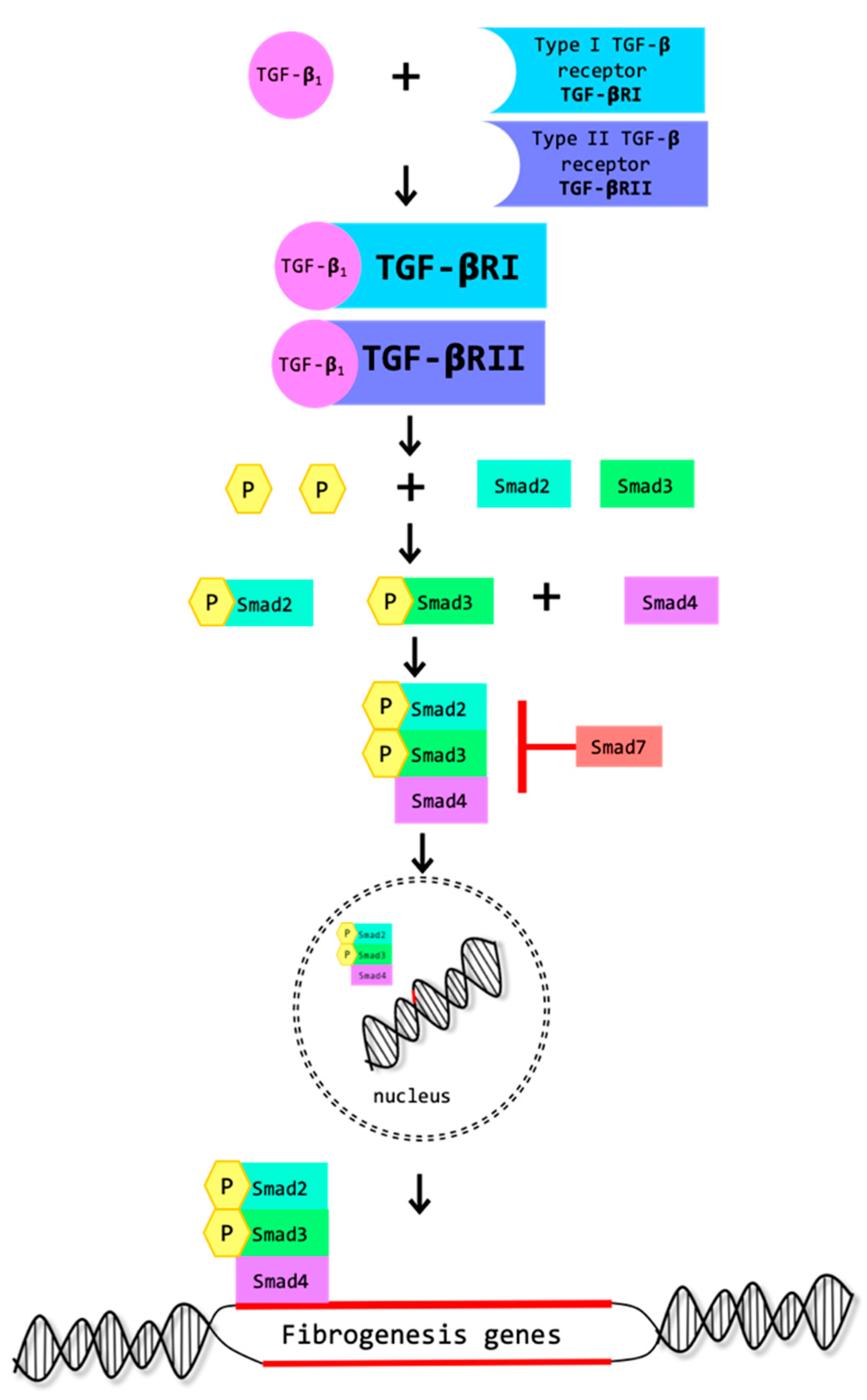

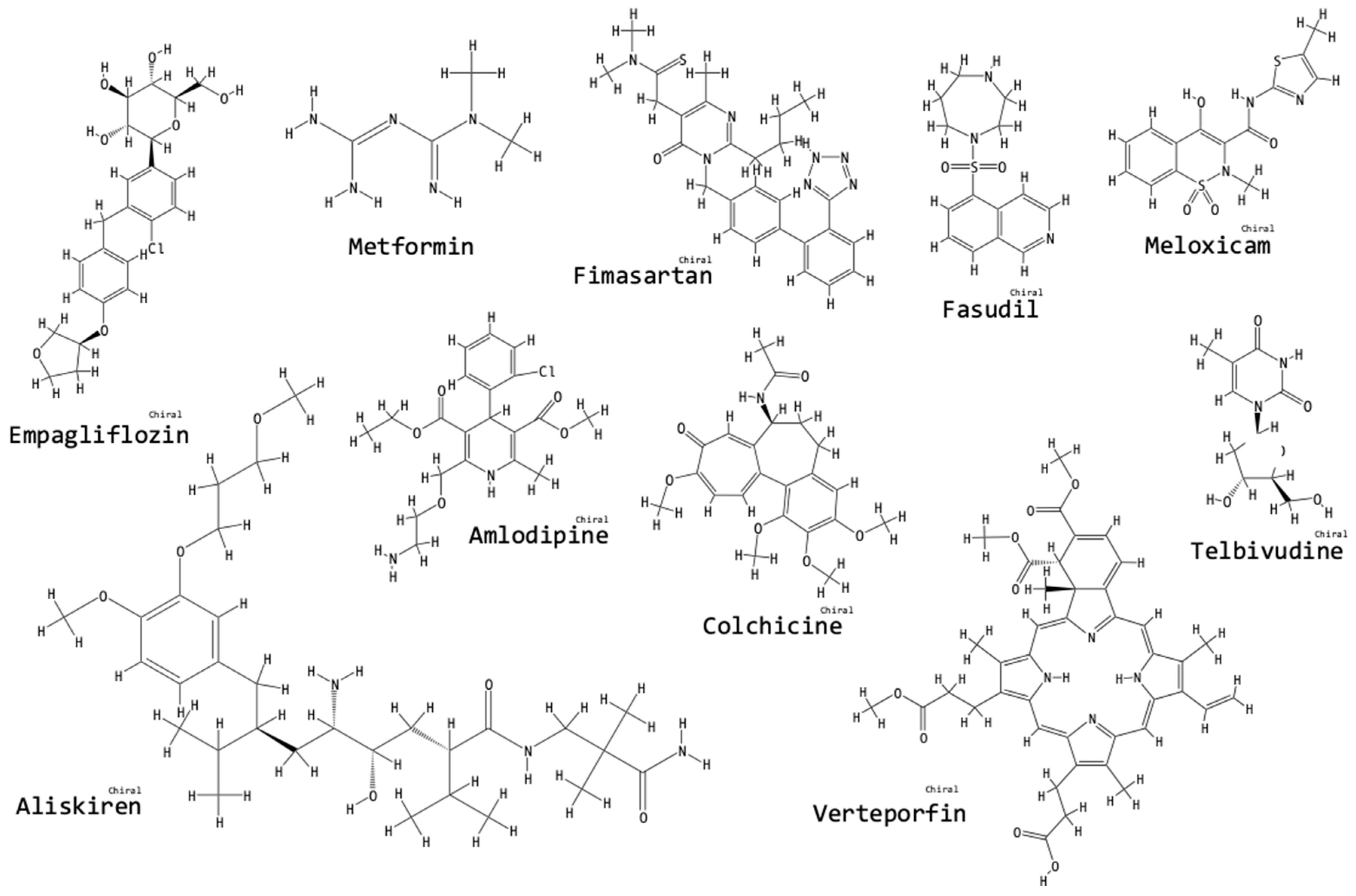
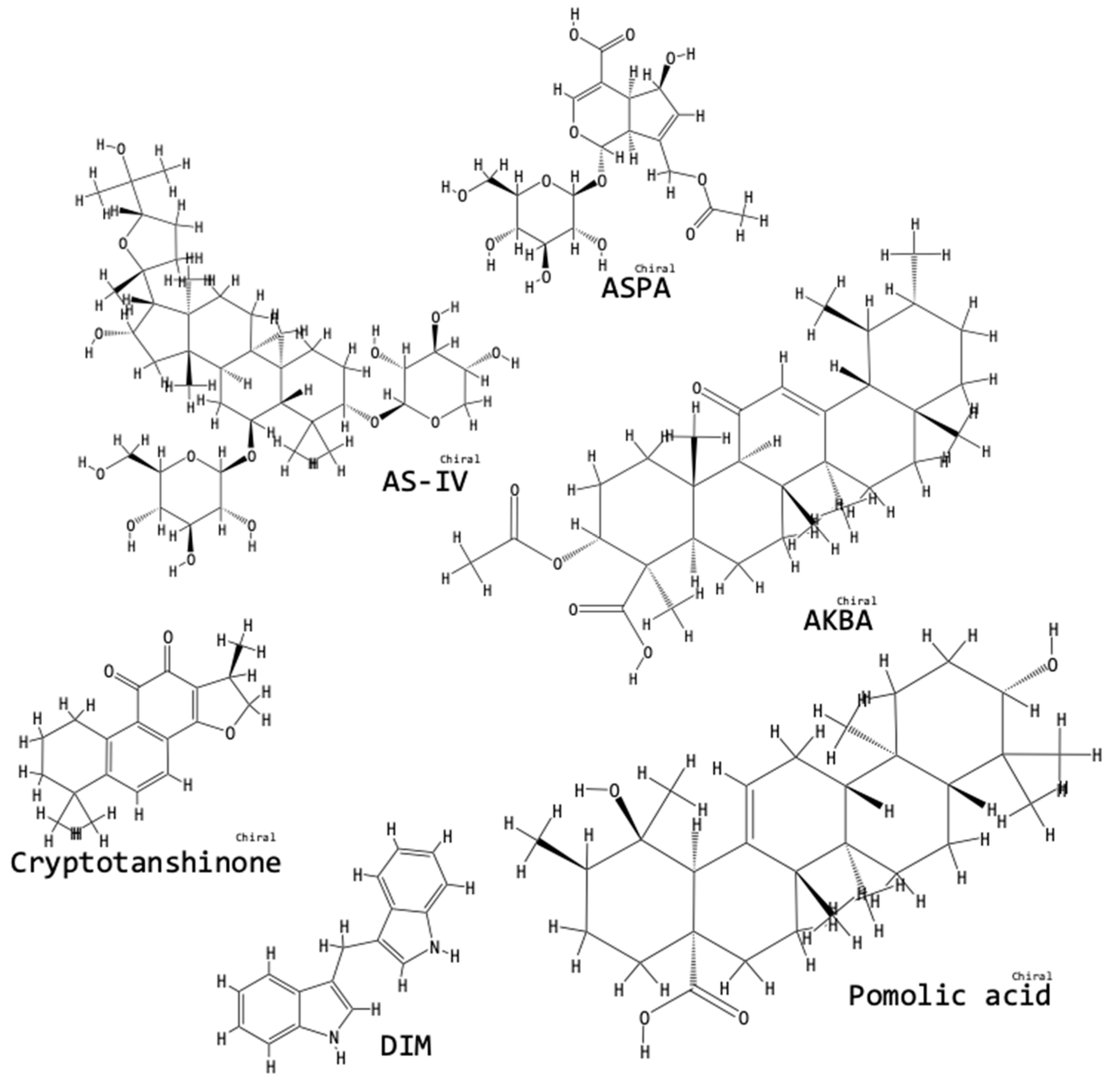
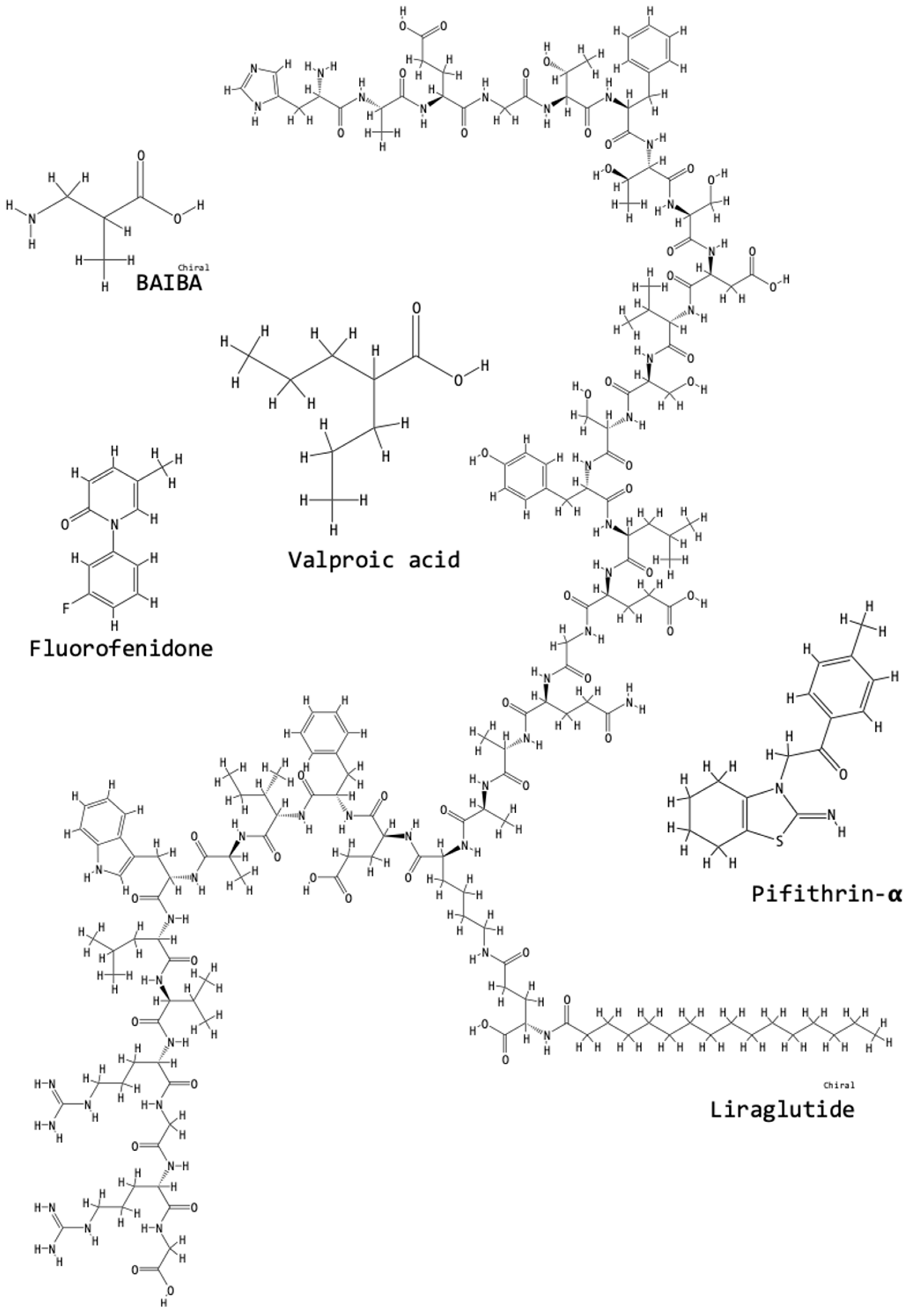
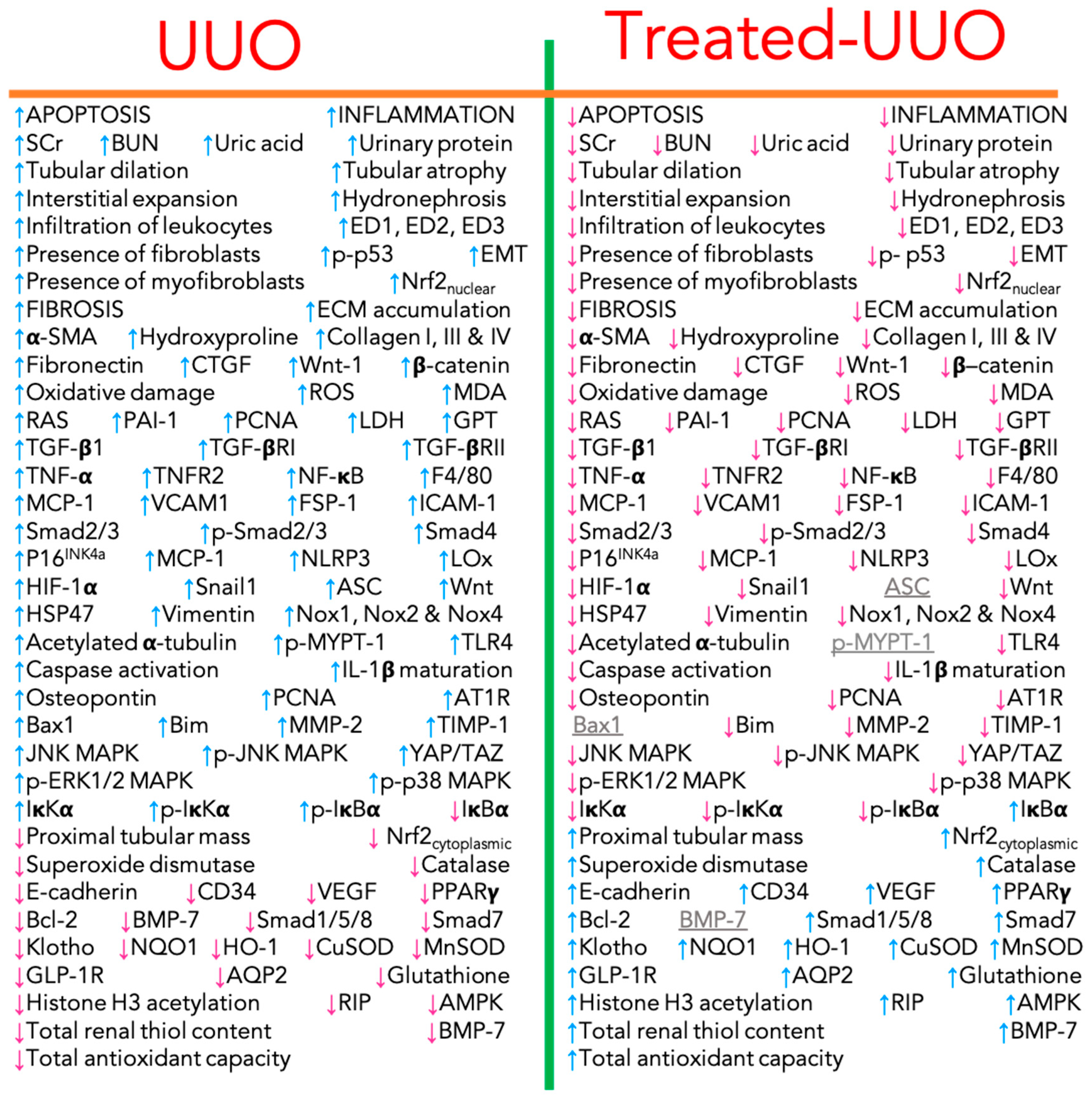
| Experimental Animal | Treatment Supplementation | Anesthesia | Ureter Ligation | Reference |
|---|---|---|---|---|
| Male Sprague-Dawley rats (250–280 g) | Drinking water | Isoflurane | Left, 5-0 silk | [10] |
| Male Sprague-Dawley rats (200–250 g) | Drinking water | Sodium pentobarbital (50 mg/kg) | Left, triple ligation, 4-0 silk, | [15] |
| Male Sprague-Dawley rats (200–250 g) | Intraperitoneal injection | 10% Chloral hydrate (3 mL/kg) | Right, 5-0 silk, ligation in two places and cut between, penicillin | [16] |
| Male Sprague-Dawley rats (200–220 g) | Intraperitoneal injection | Mixture of isoflurane and oxygen, pentobarbital | Left, double ligation, 4-0 silk, cut | [4] |
| Male Sprague-Dawley rats (240–280 g) | Gavage in 1% carboxymethylcellulose-Na | Pentobarbital sodium (80 mg/kg) | Left, double ligation, 4-0 silk, cut | [17] |
| Male Sprague-Dawley rats (8 weeks old) | Gavage | Tiletamine/zolazepam (10 mg/kg) | Left, 4-0 silk, ligation at two locations and cut in between | [7] |
| Male Sprague-Dawley rats (180–200 g) | Gavage in 1% gum acacia | Pentobarbital sodium (50 mg/kg) | Left, 4-0 silk, triple ligation and cut | [18] |
| Male Sprague-Dawley rats (180–200 g) | Tube-fed | Pentobarbital | Left, 4-0 silk, ligation in two points and cut in between | [9] |
| Male Sprague-Dawley rats (200–250 g) | Subcutaneous implanted mini-osmotic pump and intraperitoneal injection | Isoflurane | Left, double ligation, 7-0 silk | [19] |
| Male Wistar rats (7 weeks old, 270–320 g) | Intraperitoneal injection | Ketamine/xylazine (70/7 mg/kg) | Left, 4-0 silk, ligation at two points and cut between | [13] |
| Male Wistar rats (200–220 g) | Oral administration | Ketamine/chlorpromazine (100 /0.75 mg/kg) | Left, silk | [20] |
| Male Wistar rats (209–247 g) | Gavage in 0.5% carboxymethylcellulose | Ketamine/xylazine hydrochloride (80/8 mg/kg) | Left, 3-4 mm long bisected PVC tube of 0.58 mm internal diameter, tube constriction with 4-0 silk (reversed UUO) | [21] |
| Male Wistar rats (260–305 g) | Gavage | Thiopental (100 mg/kg) | Left, 3-0 silk, double ligation | [22] |
| Female nu/nu mice (18–22 g, 6-8 weeks) | Intravenous injection through tail vein | Chloral hydrate 10% | Left, ligation of lower third, 4/0 suture | [14] |
| Male BALB/cCrSlc mice (5 weeks old) | Drinking water | Pentobarbital (50 mg/kg) | Left, ligation, 4-0 silk | [23,24] |
| Male BALB/c mice (6–8 weeks old, 18–22 g) | Gavage | Sodium pentobarbital (3% 10 mL/kg) | Left, double ligation, 4-0 nylon | [25] |
| Male C57BL/6 mice (9 weeks old) | Drinking water | Sevofrane | Left, complete ligation at the ureteropelvic junction, 4-0 silk | [26] |
| Male C57BL/6J mice (8 weeks old, 22–25 g) | Intraperitoneal injection | Medetomidine, midazolam, butorphanol | Left, double ligation | [27] |
| Male C57BL/6 mice (6–8 weeks old) | Intraperitoneal injection | 3.5% Chloral hydrate (350 mg/kg) | Right, double ligation, 6-0 silk | [1] |
| Male C57BL/6 mice (3 months old) | Intraperitoneal injection | Pentobarbital sodium | Left, tightening at midportion, 5-0 suture | [28] |
| Male C57BL/6 mice (7 weeks old, 20–23 g) | Intraperitoneal injection | Ketamine/xylazine (100/10 mg/kg) | Right, double ligation, 3-0 silk | [29] |
| Male C57BL/6 mice (6–8 weeks old, 20–22 g) | Intraperitoneal injection | 10% Chloral hydrate (3 mL/kg) | NS | [30] |
| Male C57BL/6 mice (6-8 weeks, 18–20 g) | Gavage | Sodium pentobarbital (1.5% 50 mg/kg) | Left, 4-0 silk, ligation at two points and cut in between | [31] |
| Male C57BL/6 mice (5–7 months old, 25–35 g) | Gavage | Isoflurane/oxygen | 4-0 silk | [32] |
| Male and female C57Bl/6 mice | None | Isoflurane | Left, double ligation, 5-0 silk | [33] |
| Male ICR mice (18–20 g) | Injection into left kidney via ureter | Pentobarbital (75 mg/kg) | Left, complete obstruction, silk | [34] |
| Male ICR mice (25–30 g) | Intraperitoneal injection | Pentobarbital sodium | Left, double ligation, 4-0 silk | [35] |
| Marker↓ Technique➝ | Immunohistochemistry | RT-qPCR | Western Blot |
|---|---|---|---|
| 18s rRNA | =[7,26] | ||
| α-SMA | ↑[8,9,10,19,26,27,29,31,38,42,51,52] | ↑[1,7,15,19,25,26,27] | ↑[1,7,15,17,25,26,27,29,31,32,38,50,51,52,53] |
| α-Tubulin | ↓[53] | ||
| α-Tubulin acetylated | ↑[53] | ||
| β-Actin | =[8,23,27,30,42,52,53] | ||
| β-Catenin | ↑[25,54] | ||
| β-Catenin active | ↑[25,54] | ||
| β-cateninnuclear | ↑[54] | ||
| A1AR, A3AR, A2AAR, A2BAR | ↑[7] | ||
| ACE | ↓[28] | ↑[25] | |
| ACE2 | ↓[28] | ||
| AGT | ↑[25] | ||
| Angiotensin II | ↑[13] | ||
| ASC | ↑[28,48] | ↑[28,48] | |
| AQP1, AQP2, AQP3, AQP4 | ↓[28] | ↓[28] | |
| p-ATM | ↑[55] | ||
| AT1R | ↑[28] | ↑[8,25] | |
| Bax | ↑[8] | ||
| Bcl-2 | ↓[8] | ||
| Bim | ↑[8] | ||
| BMP-7 | ↓[35] | ↓[35] | ↓[35] |
| Caspase-1 | ↑[28,48] | ↑[28] | |
| Caspase-1 cleaved | ↑[48] | ||
| pro-Caspase-1 | ↑[48] | ||
| Caspase-3 cleaved | ↑[1,53] | ||
| Caspase-8 | ↑[22] | ||
| Caspase-9 | ↑[53] | ||
| Catalase | ↓[8] | ||
| CD3 | ↑[48] | ||
| CD34 | ↓[14] | ||
| Collagen I | ↑[14,17,27,29,42,49,51] | ↑[7,15,26,27,38] | ↑[7,14,15,17,25,31,32,51,52] |
| Collagen III | ↑[17,27] | ↑[18,26,27] | ↑[17,32] |
| Collagen IV | ↑[56] | ↑[1,23,24] | ↑[1,31] |
| CTGF | ↑[20,57] | ↑[33,57] | |
| CuSOD | ↓[8] | ||
| E-cadherin | ↓[14,32,38,42,51,52] | ↑[7] | ↓[7,14,25,38,51,52,54] =[53] |
| ED1 (CD68) | ↑[7,9,10,27,48] | ↑[53] | |
| ED2 (CD163) | ↑[10] | ||
| ED3 (CD169) | ↑[10] | ||
| EGFR | ↑[57] | ||
| p-EGFR | ↑[57] | ||
| ERK1/2 MAPK | ↑[1,23,38] = [51] | ||
| p-ERK1/2-MAPK | ↑[1,7,23,24,38,51] | ||
| F4/80 | ↑[8,24,26,29,32] | ↑[26] | |
| Fibronectin | ↑[27,32,42,49,51] | ↑[1,7,15,26,27,38] | ↑[1,7,15,25,27,29,32,49,51,52,53] |
| FSP-1 (S100A4) | ↑[27,29,35] | ↑[25,35] | |
| GAPDH (G3PDH) | =[1,10,15,17,23,24,32,51] | =[17,26,27,29,31,38,49] | |
| GLP-1R | ↓[38] | ||
| GSTa2 | =[8] | ||
| GSTm3 | ↓[8] | ||
| HIF-1[α] | ↑[14] | ↑[14] | |
| Histone H3 | =[29] | ||
| Histone H3 acetylated | =[29] | ||
| HO-1 | =[8] | ↓[8] ↑[30] | |
| HSP47 | ↑[23] | ↑[24] | |
| IκBα | ↓[17,30] | ||
| p-IκBα | ↑[17,30] | ||
| IκKα | ↑[17] | ||
| p-IκKα | ↑[17] | ||
| ICAM-1 | ↑[29] | ↑[18] | ↑[29] |
| IL-1[β] | ↑[17] | ↑[[28,48] | ↑[17,28] |
| Cleaved-IL-1β | ↑[48] | ||
| pro-IL-1β | ↑[48] | ||
| IL-6 | ↑[28] | ||
| IL-17 | ↑[15] | ↑[15] | |
| IL-18 | ↑[28] | ||
| JNK-MAPK | ↑[1,51] =[23] | ||
| p-JNK-MAPK | ↑[1,7,23,24,51] | ||
| Keap1 | ↑[8] | ||
| Ki-67 | ↑[14,29] | ||
| Klotho | ↓[20] | ↓[31] | |
| LRP5 LRP6 | ↑[54] | ||
| p-LRP5 p-LRP6 | ↑[54] | ||
| Lysyl oxidase (LOx) | ↑[7] | ||
| MCP-1 | ↑[9,13,14,29] | ↑[7,18,19,26,28] | ↑[14] |
| MMP2 | ↑[27] | ↑[17,27,54] | |
| MMP7 | ↑[25] | ↑[54] | |
| MMP9 | ↑[27] | ↑[27] | |
| MnSOD | ↓[8] | ||
| p-MYPT-1 | ↑[26] | ||
| NF-κB | ↑[17,30] | ||
| p-NF-κB | ↑[17] | ||
| NLRP3 | ↑[28,48] | ↑[48] | |
| Nox1, Nox2, Nox4 | ↑[8] | ||
| NQO1 | ↓[8] | ↓[8] | |
| Nrf2cytoplasmic | ↓[8] =[30] | ||
| Nrf2nuclear | =[8] ↑[30] | ||
| OPN | ↑[19] | ||
| P16INK4a | ↑[35] | ↑[35] | ↑[35] |
| p22Phox | ↑[55,57] | ||
| p38-MAPK | ↑[1] = [51] | ||
| p-p38-MAPK | ↑[1,51] | ||
| p53 | ↑[57,58] | ↑[58] | |
| p-p53 | ↑[55,57] | ||
| PAI-1 | ↑[57] | ↑[18] | ↑[25,33,52,57] |
| PCNA | ↑[14] | ↑[15] | ↑[15] |
| PPAR-𝝲 | ↑[49] | ||
| PRR | ↑[28] | ||
| Renin | ↑[19,28] | ↑[25] | |
| Renin Receptor | ↑[28] | ||
| ROCK1 and ROCK2 | ↑[26] | ||
| RIP | ↓[22] | ||
| Smad1/5/8 | ↓[35] | ||
| Smad2 | ↑[17,35] | ↑[17,25,27] = [51] | |
| p-Smad2 | ↑[17,25,29,51] | ||
| Smad3 | ↑[17] | ↑[17,25,27,51] = [38,52] | |
| p-Smad3 | ↑[7,17,25,26,29,33,38,51,52,55,57] | ||
| Smad2/3 | ↑[31,35] | ↑[29,35,49] | |
| p-Smad2/3 | ↑[31,57] | ||
| Smad4 | ↑[25,27,31,51] | ||
| Smad7 | ↓[25,29,31] | ||
| Smad8 | ↓[35] | ||
| Snail1 | ↑[38] | ↑[25,54] | |
| p-Src | ↑[59] | ||
| STAT3 | =[52] | ||
| p-STAT3 | ↑[52] | ||
| TAZ | ↑[33,56] | ↑[33] | |
| TIMP-1 | ↑[17] | ||
| TGF-β1 | ↑ [9,14,31,35,38] | ↑[1,7,10,17,19,24,26,27,28,35,38] | ↑[14,17,31,32,35,51,53] |
| TGF-βRI | ↑[38] | ↑[38] | ↑[27,31] |
| TGF-βRII | ↓[27] ↑[31] | ||
| TLR4 | ↑[17] | ||
| TNF-α | ↑[17] | ↑[28] | ↑[17,32] |
| TNFR1 | =[22] | ||
| TNFR2 | ↑[22] | ||
| TRAF2 | ↓[22] | ||
| Twist | ↑[25,54] | ||
| V2R | ↓[28] | ||
| VCAM-1 | ↑[32] | ||
| VEGF | ↓[14] | ↓[14] | |
| Vimentin | ↑[42] | ↑[29] | |
| Wnt1 | ↓[54] | ↑[25] | |
| Wnt2 | ↑[54] | ||
| Wnt3 | ↑[54] | ↑[54] | ↑[54] |
| Wnt4 | ↑[54] | ↑[54] | ↑[54] |
| YAP | ↑[56] | ↑[33] |
| Treatment | Amount Supplied | Time of Supplementation | Days until Euthanasia | Reference |
|---|---|---|---|---|
| Aliskiren | 20 mg/kg/day (3 or 7 days) | Immediately before UUO | 3, 7 | [28] |
| Aliskiren and MZR | 20 mg/kg/day and 10 mg/kg/day | One day after and daily | 14 | [19] |
| Alpha-lipoic acid | 60 mg/kg/day | Two days before and daily | 7 | [4] |
| AKBA | 10, 20, 40 mg/kg/day | Immediately after and daily | 14 | [31] |
| Amlodipine | 6.7 mg/kg/day | Immediately after | 7 | [24] |
| Amygdalin | 3, 5 mg/kg/day | Immediately after and daily | 7, 14, 21 | [39] |
| Applephenon | 0.05, 0.1, 0.15% where 0.1% is 40 mg/kg/day | One day after and daily | 7, 14, 21 | [9] |
| ASPA | 10, 20, 40 mg/kg/day | Immediately after and daily | 14 | [16] |
| AS-IV | 20 mg/kg/day | Immediately after and daily | 7, 14 | [1] |
| BAIBA | 150 mg/kg/day | Immediately after and daily | 14 | [15] |
| Colchicine | 30, 60, 100 µg/kg/day | Immediately after and daily | 7 | [53] |
| Cryptotanshinone | 50 mg/kg/day | Seven days before and daily | 7 | [51] |
| Curcumin | 50, 100 mg/kg/day | One day after and daily | 14 | [49] |
| Curcumin | 200 mg/kg/day | Five days before and daily | 3 | [21] |
| Curcumin | 200, 800 mg/kg/day | Seven days before and daily | 7 | [18] |
| DIM | 100 mg/kg/day | Four weeks before and daily | 7 | [42] |
| Empagliflozin | 10 mg/kg/day | One week before and daily | 14 | [20] |
| Empagliflozin | 10 mg/kg/day | Immediately after | 14 | [20] |
| Empagliflozin | 10 mg/kg/day | One week after and daily | 21 | [20] |
| EGCG | 50 mg/kg/day | Immediately after and daily | 14 | [30] |
| Erythropoietin | 1000 U/kg/day | One day before and every other day | 3, 7, 14 | [35] |
| Fasudil | 1 g/L | Two days before and daily | 3, 7, 14 | [26] |
| Fimasartan | 3 mg/kg/day | Immediately after and daily | 7 | [8] |
| Fluorofenidone | 500 mg/kg/day | One day before and daily | 3, 7 | [48] |
| hAFSCs | 3.5 × 105 cells | Immediately after | 1, 3, 7, 14 | [14] |
| HSP47 siRNA | 50 µg/mouse | Immediately before | 0, 7, 14 | [34] |
| Liraglutide | 600 µg/kg/day | Immediately after and daily | 7 | [38] |
| LJ-1888 | 1, 10 mg/kg | Five days before and daily | 5 | [7] |
| LJ-1888 | 1, 10 mg/kg | Three days after | 10 | [7] |
| Meloxicam | 1 mg/kg/day | Immediately after and daily | 7 | [23] |
| Metformin | 200 mg/kg/day | One day before | 7, 14 | [32] |
| Pomolic acid | 0.4 mg/kg/day | Immediately after and two days after | 7 | [52] |
| Poricoic acids | 5, 10, 20, 40 mg/kg/day | Immediately after and daily | 7 | [25] |
| PR-619 | 100 µg per day | Immediately after | 7 | [27] |
| Telbivudine | 1, 1.5, 2 g/kg/day | From day two and daily | 36 | [17] |
| Thymoquinone | 10 mg/kg | Three days before and daily | 14 | [13] |
| Valproic acid | 300 mg/kg/day | Five days before and daily | 14 | [29] |
| Verteporfin | 100 mg/kg | Every other day after | 7, 14 | [56] |
| Verteporfin | 100 mg/kg | Seven days after | 7, 14 | [56] |
© 2019 by the authors. Licensee MDPI, Basel, Switzerland. This article is an open access article distributed under the terms and conditions of the Creative Commons Attribution (CC BY) license (http://creativecommons.org/licenses/by/4.0/).
Share and Cite
Martínez-Klimova, E.; Aparicio-Trejo, O.E.; Tapia, E.; Pedraza-Chaverri, J. Unilateral Ureteral Obstruction as a Model to Investigate Fibrosis-Attenuating Treatments. Biomolecules 2019, 9, 141. https://doi.org/10.3390/biom9040141
Martínez-Klimova E, Aparicio-Trejo OE, Tapia E, Pedraza-Chaverri J. Unilateral Ureteral Obstruction as a Model to Investigate Fibrosis-Attenuating Treatments. Biomolecules. 2019; 9(4):141. https://doi.org/10.3390/biom9040141
Chicago/Turabian StyleMartínez-Klimova, Elena, Omar Emiliano Aparicio-Trejo, Edilia Tapia, and José Pedraza-Chaverri. 2019. "Unilateral Ureteral Obstruction as a Model to Investigate Fibrosis-Attenuating Treatments" Biomolecules 9, no. 4: 141. https://doi.org/10.3390/biom9040141
APA StyleMartínez-Klimova, E., Aparicio-Trejo, O. E., Tapia, E., & Pedraza-Chaverri, J. (2019). Unilateral Ureteral Obstruction as a Model to Investigate Fibrosis-Attenuating Treatments. Biomolecules, 9(4), 141. https://doi.org/10.3390/biom9040141






